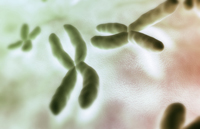Archived Content
The National Institute of Mental Health archives materials that are over 4 years old and no longer being updated. The content on this page is provided for historical reference purposes only and may not reflect current knowledge or information.
Imaging Reveals Abnormal Brain Growth in Toddlers with Fragile X
• Science Update

Differences in brain growth patterns between preschool-aged boys with Fragile X syndrome (FXS), the most common cause of inherited intellectual disability, and their healthy peers suggest that the disorder may affect brain development both before and after birth, according to NIMH-funded researchers. In addition, their findings indicate ages 1-5 are an important window for better understanding the effects of FXS on brain development. The study was published May 18, 2010, in the Proceedings of the National Academy of Sciences.
Background
In addition to its association with intellectual disability, FXS is the most common known specific genetic risk factor for autism spectrum disorders (ASD). FXS results from mutations on a gene that creates a protein called FMRP. The mutations, in effect, turn off the gene. Relatively little is known about how these mutations affect brain development in early childhood.
Allan Reiss, M.D., of Stanford University, in collaboration with colleagues from Stanford and the University of North Carolina, used magnetic resonance imaging (MRI) to examine changes in brain volumes in 69 boys, first assessed at ages 1-3 and then again an average of two years later at ages 3-5. Of the participants, 41 had FXS, 21 had typical development, and seven had some form of developmental delay.
Results of the Study
The researchers found that some brain regions were similar between the boys with FXS and those without FXS at both times they underwent MRI. Other regions were abnormal among those with FXS at the first time point and remained that way at the second time point, suggesting that the gene mutations responsible for FXS begin to alter brain development early in life, possibly even before birth.
Furthermore, some brain regions were similar among all the participants at the start of the study but showed major differences by the second MRI at ages 3-5.
"This third category is the most interesting because it suggests that we have captured a critical development window of brain development that is significantly affected by fragile X," said Reiss.
Significance
The same mutations that cause FXS are also strongly linked to ASD. Thus, FXS is considered a model condition for informing research on ASD.
This study provides greater insight into how FXS mutations affect early brain development, which may one day serve as targets for the development and evaluation of new interventions for FXS and related disorders.
What's Next
The researchers note that their study provides only preliminary information and that it will be crucial to follow the study participants as they enter their school age years, a time when the greatest number and severity of ASD behaviors tend to appear.
Future studies should include larger control samples, track development from an earlier age, and follow participants for a longer period of time. Studies comparing FXS population with those affected by other specific genetic risk factors, such as those occurring in Williams syndrome , may be useful as well.
Reference
Hoeft F, Carter JC, Lightbody AA, Cody Hazlett H, Piven J, Reiss AL. Region-specific alterations in brain development in one- to three-year-old boys with fragile X syndrome . Proc Natl Acad Sci U S A. 2010 2010 May 18;107(20):9335-9. Epub 2010 May 3. PubMed PMID: 20439717.
